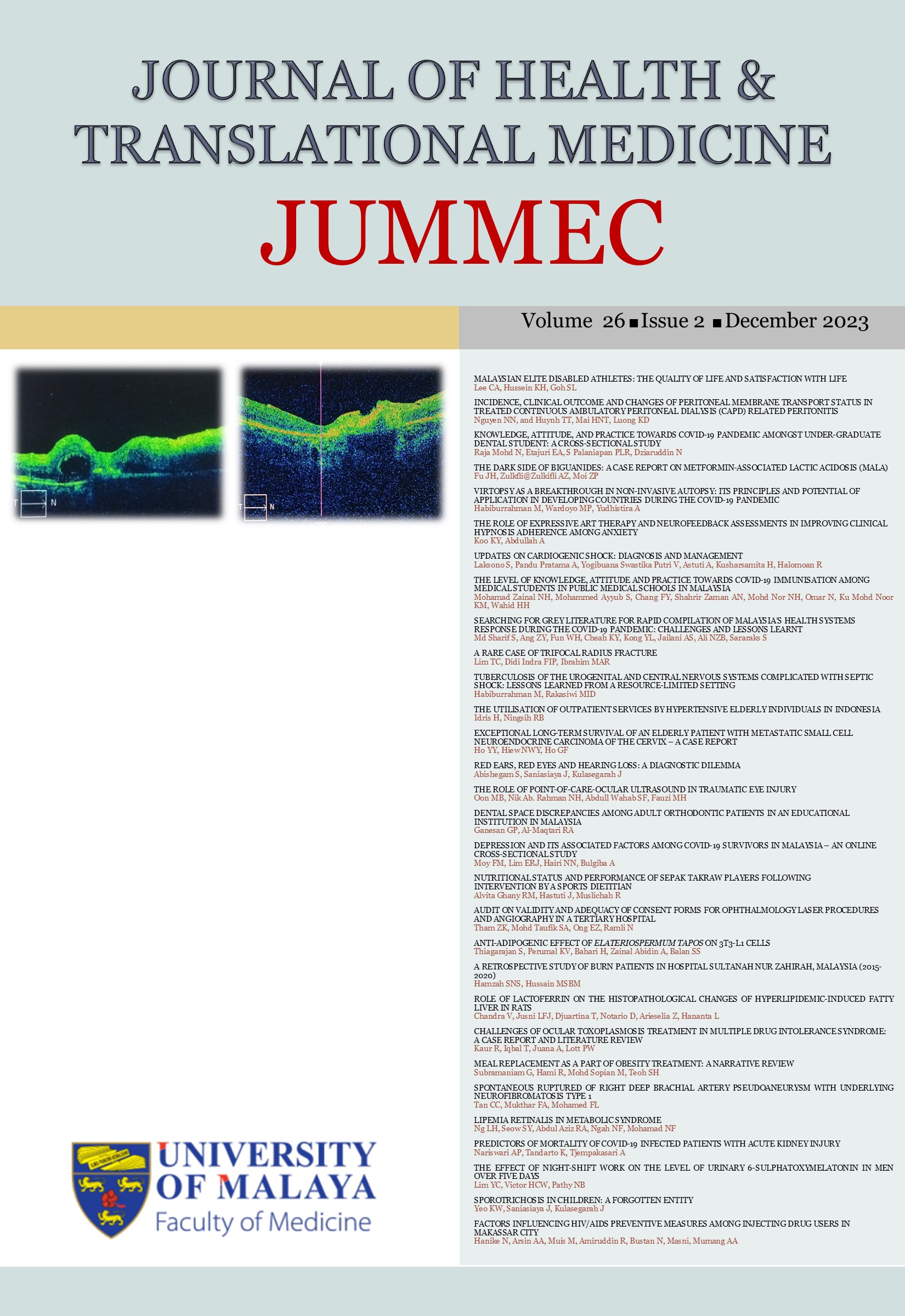ANTI-ADIPOGENIC EFFECT OF ELATERIOSPERMUM TAPOS ON 3T3-L1 CELLS
Received 2023-01-05; Accepted 2023-04-18; Published 2023-09-05
DOI:
https://doi.org/10.22452/jummec.vol26no2.20Abstract
Obesity is defined as an excessive fat accumulation that causes metabolic syndrome such as diabetes, hypertension, and abnormal cholesterol levels. Adipocytes are a major part of the adipose tissue that grows the abnormal lipid droplets which leads to fat accumulation. In modern drugs, treating obesity without any side effects is challenging. Natural products such as plants and herbs are widely used to cure obesity. Natural products are safer because of their reduced toxicity and infrequent negative effects. This study focuses on examining the potential anti-adipogenesis effects of Elateriospermum tapos on 3T3-L1 cells. The extracts from both seed and shell of the fruit were extracted using hot, cold and ethanol extraction. The extracts were tested for the cytotoxicity on 3T3-L1 cells and on zebrafish embryo in vivo. Zebrafish study on heartbeat, heart rate and scoliosis formation, shell extract show less toxic compared to seed extract. This shell extracts showed a positive correlation determination of R2 = 0.96. Therefore, shell extracts were used to indicate the maximum non-toxic dose (MNTD) of each extraction. The lowest MNTD was observed in ethanol extract at 5.2 ± 0.01 µg/mL, hot extract at 7.6 ± 0.25 µg/mL and cold extract at 8.1 ± 0.31 µg/mL. Oil Red O staining to determine the amount of lipid accumulation showed a significant (P < 0.05) decrease of 70% when compared to adipocytes when treated with ethanol shell extract, and a significant (P < 0.05) decrease of 60% by hot shell extract. With the reduction in lipid accumulation, lipolysis was measured by accounting the amount of glycerol produced. The highest production of glycerol was significant when treated with hot shell extract at 42 mg/L, followed by cold extract at 38 mg/L. This is concluded that the hot shell extract has potential to curb obesity by reducing lipid accumulation through lipolysis at a maximum non-toxic dosage.
Downloads
Downloads
Published
Issue
Section
License
All authors agree that the article, if editorially accepted for publication, shall be licensed under the Creative Commons Attribution License 4.0 to allow others to freely access, copy and use research provided the author is correctly attributed, unless otherwise stated. All articles are available online without charge or other barriers to access. However, anyone wishing to reproduce large quantities of an article (250+) should inform the publisher. Any opinion expressed in the articles are those of the authors and do not reflect that of the University of Malaya, 50603 Kuala Lumpur, Malaysia.


